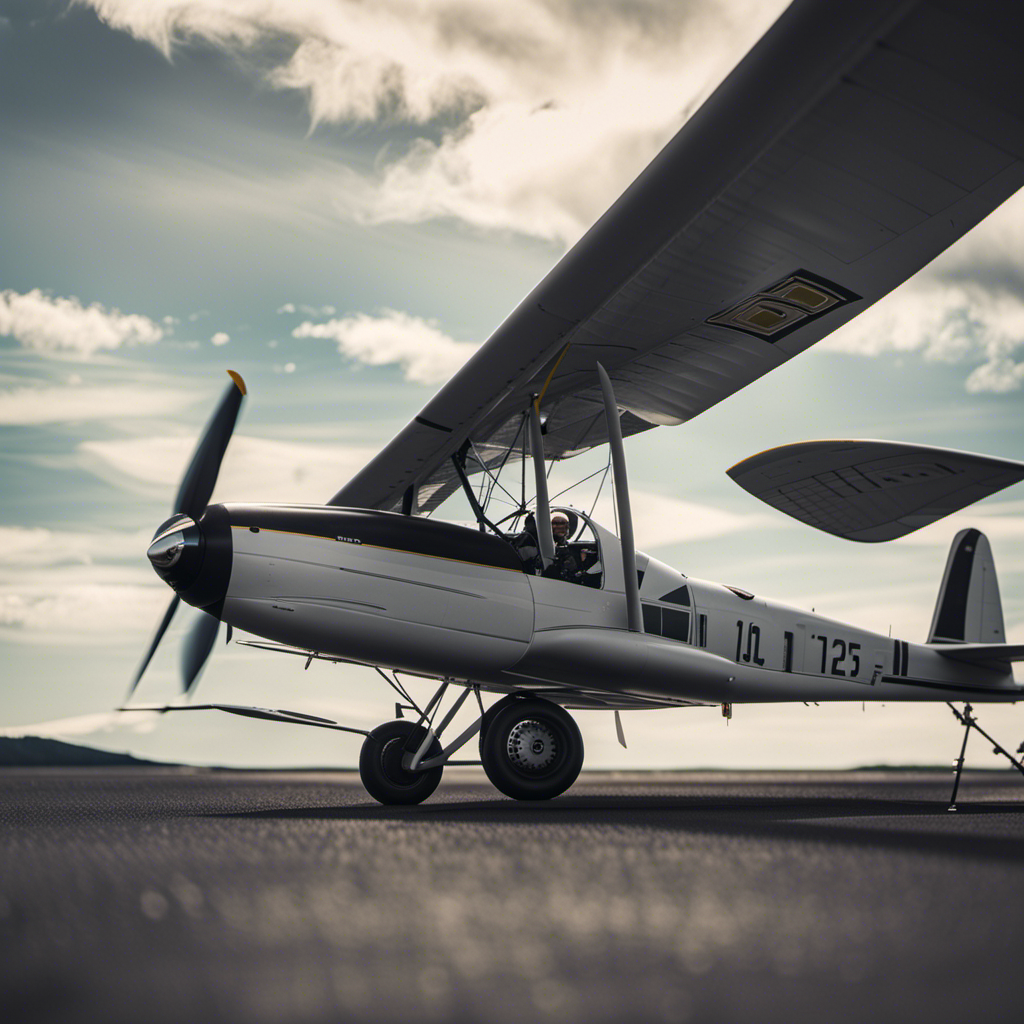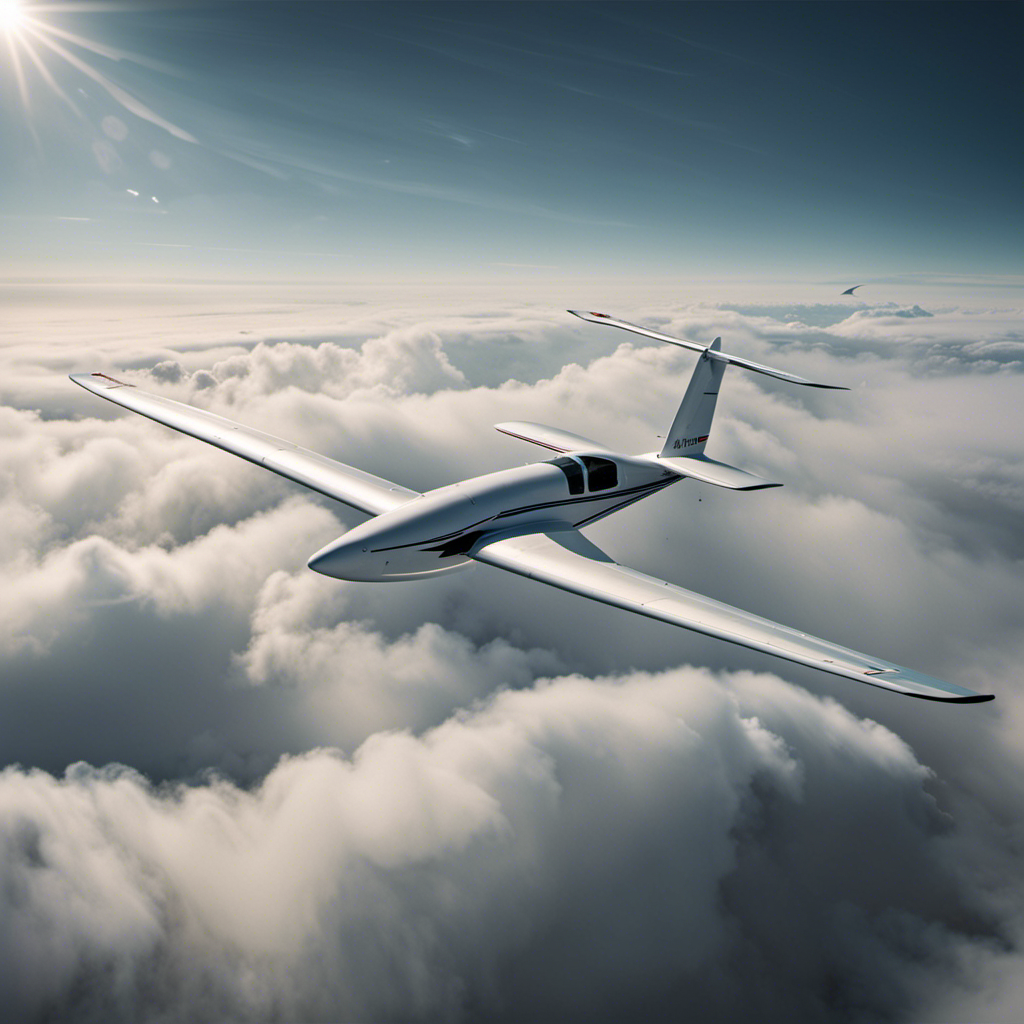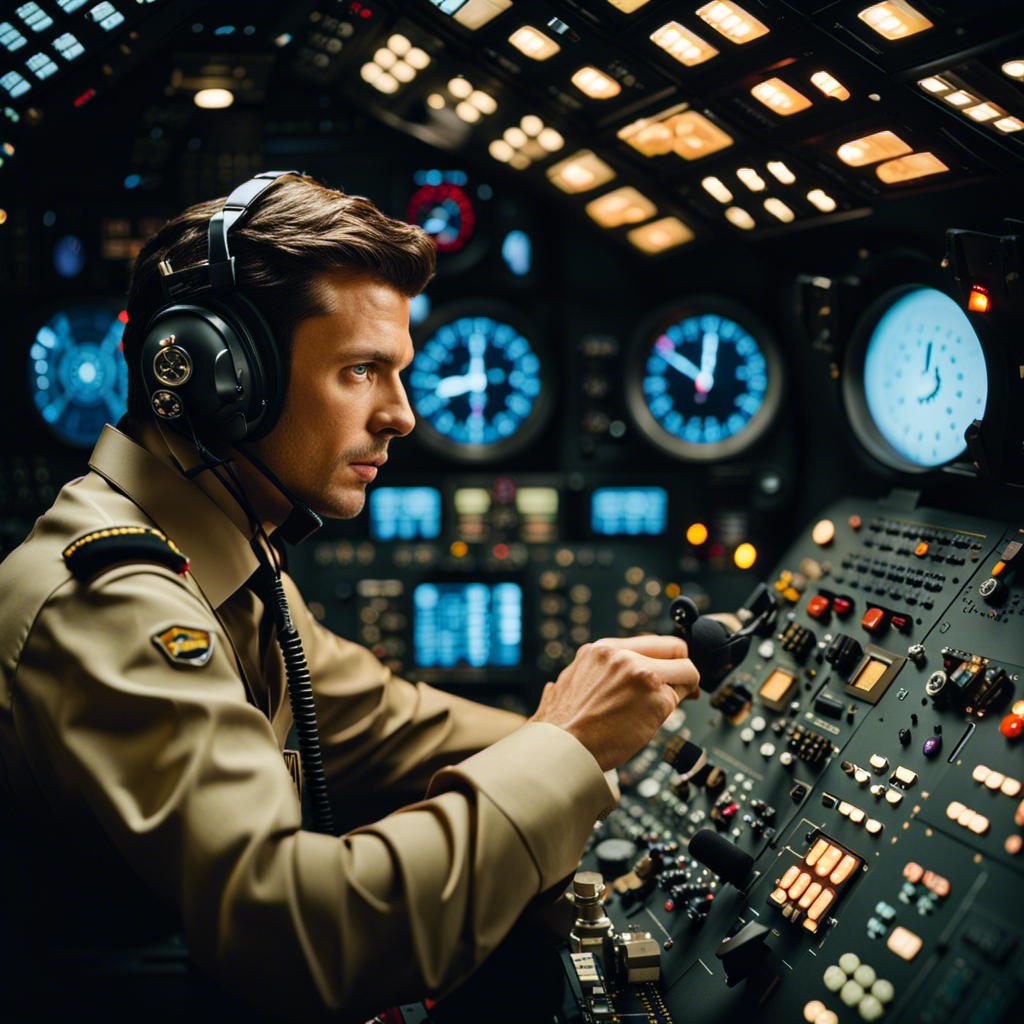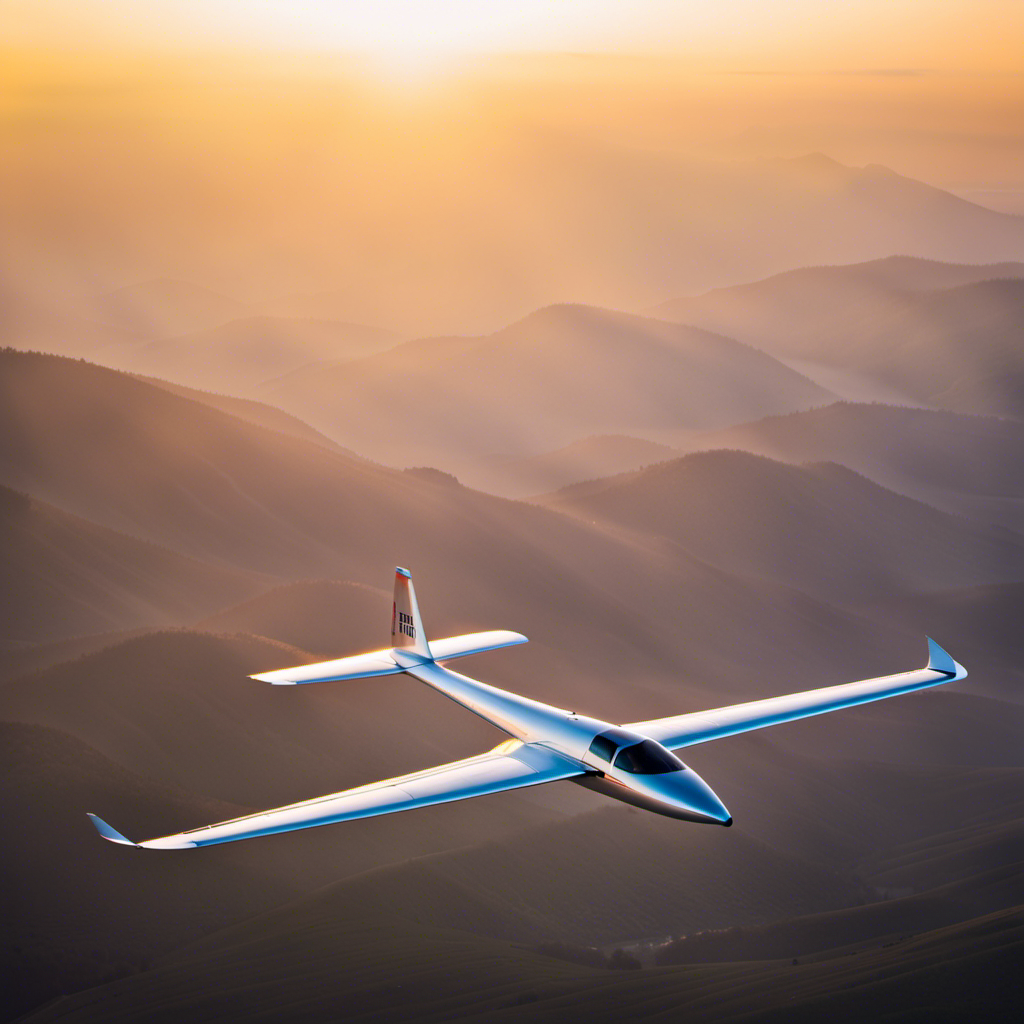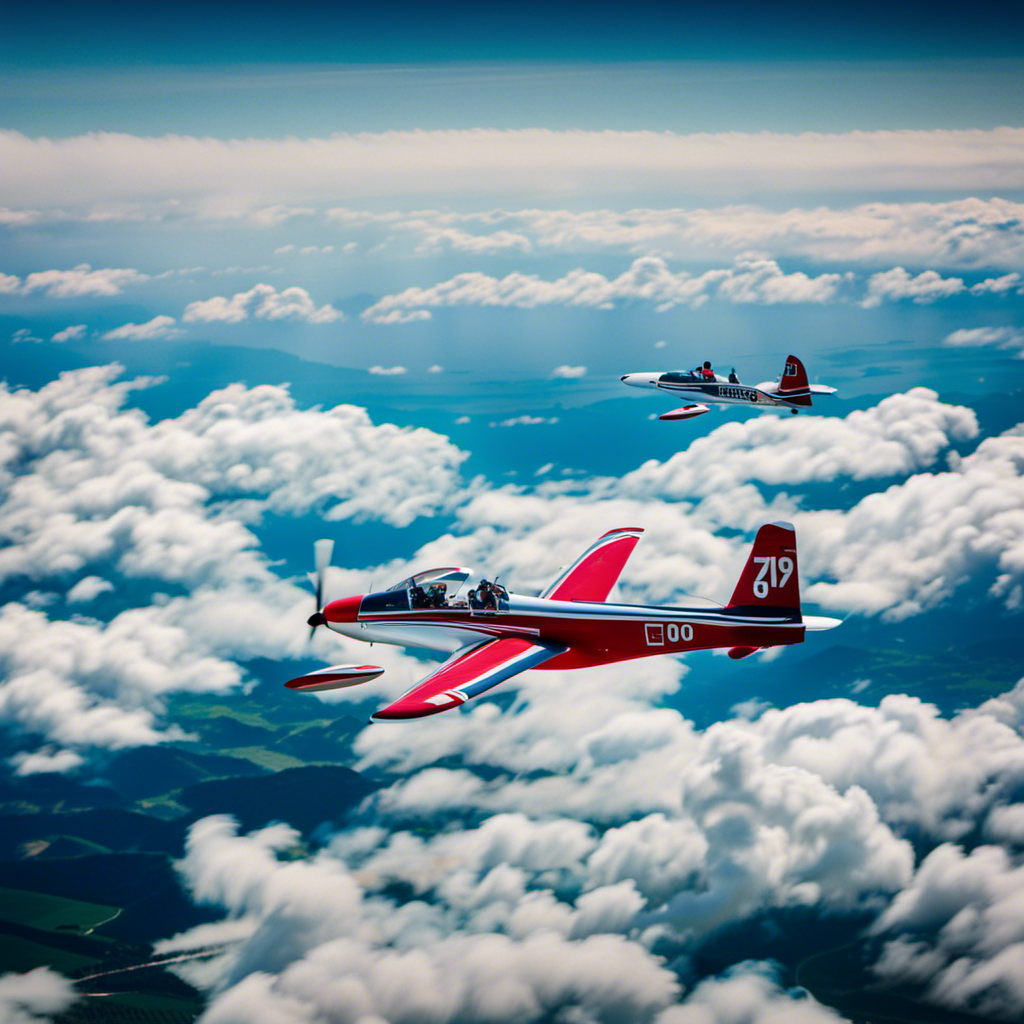I have always been fascinated by the world of aviation. One statistic that never fails to amaze me is that 90% of all glider flights begin with glider tows.
So, if you’re like me and have always wondered how glider tow operations work and what to expect during a flight, you’ve come to the right place. In this article, I’ll take you through the basics of glider tow, from preparing for the experience to landing the glider, and everything in between.
Get ready for an exhilarating journey into the world of gliding!
Key Takeaways
- Glider tow is the process of a powered aircraft towing a glider into the air, allowing it to gain altitude and begin its flight.
- Proper communication with the tow pilot is crucial during a glider tow to ensure a safe and coordinated operation.
- Safety precautions, such as checking equipment and maintaining proper distances, should be followed during a glider tow to prevent accidents.
- Glider tow offers benefits to glider pilots by providing a more efficient and controlled way to reach the desired altitude for their flights.
The Basics of Glider Tow
To start, you’ll want to know the basics of how glider tow works and what you can expect.
Glider tow is a method of launching a glider into the air using a powered aircraft called a tow plane.
Before the tow, several pre-flight checks are conducted to ensure the safety of the operation. These checks involve inspecting the aircraft’s structure, control surfaces, and instruments, as well as confirming that the tow rope is properly attached and secure.
Safety precautions are of utmost importance during glider tow. Pilots must communicate effectively with each other and adhere to specific procedures. It’s essential to maintain proper spacing and altitude during the tow to avoid any potential hazards.
Now that we understand the basics, let’s move on to preparing for your glider tow experience, where we’ll discuss what you need to know before taking to the skies.
Preparing for Your Glider Tow Experience
Get ready for your glider tow experience by making sure you know what to do and what to expect. When it comes to glider tow safety, preparation is key. Here are some important things to keep in mind:
- Familiarize yourself with the glider tow procedure, including signals and communication with the tow pilot.
- Double-check that all safety equipment, such as seatbelts and harnesses, are properly secured.
- Ensure that the glider’s controls are free and unrestricted, and that all systems are functioning correctly.
- Review the emergency procedures, such as how to release the tow rope in case of an unexpected situation.
- Communicate any specific concerns or medical conditions to the flight instructor or tow pilot.
Now that you’re prepared, let’s move on to taking off and gaining altitude, where the real adventure begins.
Taking Off and Gaining Altitude
Once you’re in the air, it’s important to maintain a steady climb and adjust the glider’s controls as needed.
Glider tow techniques are crucial during takeoff to ensure a safe and efficient ascent. Before takeoff, the glider is hooked to a tow plane via a sturdy tow rope. As the tow plane accelerates down the runway, the glider pilot keeps the glider aligned with the tow plane using the rudder pedals.
Once airborne, the pilot focuses on maintaining a steady climb angle, typically around 45 degrees. Safety precautions during takeoff include keeping a close eye on the tow rope tension and avoiding sudden movements that could put stress on the tow rope or compromise the stability of the glider.
Gliding Techniques and Maneuvers
Understanding how to control the glider is essential for safe and efficient flying. By mastering the control surfaces, such as the ailerons and elevator, I can manipulate the aircraft’s pitch, roll, and yaw.
Practicing turns and adjusting speed allows me to navigate the sky with precision and finesse, ensuring smooth and controlled flight.
Additionally, learning about thermals and lift enables me to harness the natural forces of the atmosphere, maximizing my altitude and extending my time aloft.
Understanding How to Control the Glider
To control the glider, you’ll need to learn how to use the control stick and pedals.
The control stick allows you to control the pitch of the glider, which is the up and down movement of the nose. By pushing the control stick forward, the glider will pitch down, and by pulling it back, the glider will pitch up.
Managing the glider’s yaw, which is the left and right movement of the nose, is done with the pedals. Pressing the left pedal will cause the glider to yaw to the left, while pressing the right pedal will make it yaw to the right.
It is crucial to have a good understanding of these controls, as they are essential for maintaining control and stability during flight.
Practicing Turns and Adjusting Speed
Now that you have a good grasp on controlling the glider, it’s time to practice making turns and adjusting your speed smoothly and efficiently. Adjusting altitude and improving turning technique are key skills for any glider pilot. To help you understand these concepts better, let’s take a look at the following table:
| Adjustment | Technique | Purpose |
|---|---|---|
| Bank Angle | Increase or decrease the angle of bank | Control turning radius |
| Rudder Input | Apply opposite rudder to maintain coordination | Prevent slipping or skidding |
| Spoiler Deployment | Extend or retract the spoilers | Control glide path |
Learning About Thermals and Lift
Learning about thermals and lift is essential for glider pilots to understand how to maximize their altitude and stay aloft for longer periods of time. Soaring techniques and maximizing lift are crucial skills to master in order to extend flight durations.
Thermals are columns of rising warm air that can provide significant lift to gliders. By learning how to identify and navigate thermals, pilots can effectively gain altitude and sustain flight without the use of a tow plane.
Additionally, reading weather conditions for optimal gliding performance is important. Understanding wind patterns, cloud formations, and temperature differentials can help pilots locate areas where thermals are more likely to form.
These skills allow glider pilots to make the most of their flights and stay airborne for extended periods. Transitioning into communication and coordination with the tow pilot, effective understanding of these concepts is essential for successful glider operations.
Communication and Coordination with the Tow Pilot
Make sure you’re clear and concise when communicating with the tow pilot during a glider tow. Effective communication techniques are essential for a safe and successful tow.
Before takeoff, establish a clear method of communication, such as hand signals or radio communication. Safety procedures should be discussed and understood by both the glider pilot and the tow pilot.
It is crucial to communicate any changes in speed or altitude during the tow, as well as any potential issues or emergencies. The tow pilot relies on your signals and instructions, so it is important to be precise and timely in your communication.
By maintaining open and effective communication, you can ensure a smooth and safe glider tow.
Now, let’s transition into landing the glider.
Landing the Glider
Before landing, ensure that you maintain a proper glide path and monitor your airspeed to safely touch down the glider. Landing a glider requires precise technique and careful execution to ensure a smooth and safe touchdown. Here are some important landing techniques and safety precautions to keep in mind:
-
Flare at the right moment: As you approach the landing zone, gradually reduce your airspeed and prepare to flare, which means to raise the nose of the glider slightly. Timing is crucial here. Flaring too early can result in a hard landing, while flaring too late can lead to a stall.
-
Aim for a specific spot: Pick a spot on the runway or landing area and aim to touch down there. This will help you maintain control and accuracy during the landing phase.
-
Be prepared for crosswinds: Crosswinds can make landings challenging. Use proper crosswind techniques, such as crabbing or side-slipping, to align the glider with the runway and counteract the effects of the wind.
Frequently Asked Questions
How long does a typical glider tow last?
A typical glider tow lasts around 15 to 20 minutes. The average glider tow time can vary depending on factors such as weather conditions, glider weight, and altitude reached during the tow.
Can I bring a camera or phone on my glider tow?
Camera usage on a glider tow is permitted, but safety precautions must be followed. It is important to secure the camera properly to prevent it from becoming a hazard during the flight.
What happens if the glider disconnects from the tow plane mid-air?
In the event of a glider disconnecting from the tow plane mid-air, emergency procedures and safety precautions are implemented. Pilots are trained to handle such situations, utilizing proper techniques to ensure a safe landing.
Are there any age restrictions for glider towing?
There are age restrictions in place for glider towing to ensure safety measures are followed. These restrictions vary depending on the country or organization, but generally require individuals to be a certain age to participate in glider towing activities.
How much does a glider tow typically cost?
A typical glider tow can cost around $100 to $200, depending on the location and duration of the flight. The duration of a glider tow can vary from 15 minutes to an hour, depending on weather conditions and the desired experience.
Conclusion
In conclusion, the glider tow experience is a thrilling adventure that allows you to soar through the skies like a bird.
As I watched the tow plane release us, I couldn’t help but feel a rush of freedom and excitement, much like a butterfly emerging from its chrysalis.
The feeling of weightlessness and the breathtaking views are unparalleled. It’s an experience that will leave you with a newfound appreciation for the power of nature and the beauty of flight.
So, strap yourself in and prepare for an unforgettable journey into the skies.
With a heart that soars as high as the skies, Aria, affectionately known as “Skylark,” is the driving force behind Soaring Skyways. Her journey into the gliding world began as a young dreamer gazing up at the soaring birds, yearning to experience the weightlessness and freedom they embodied. With years of experience both in the cockpit and behind the scenes, Aria’s commitment to the gliding community is unwavering.
